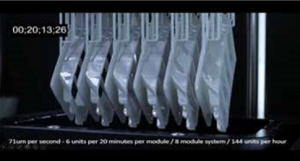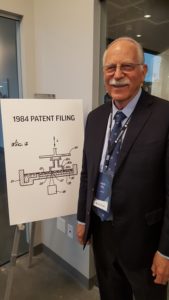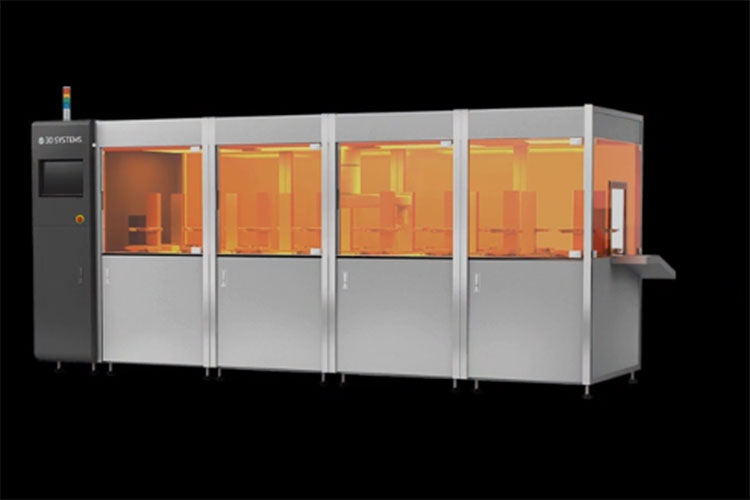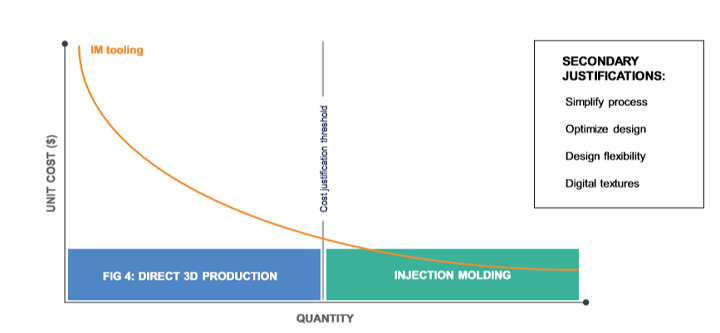Injection molding was invented nearly 150 years ago, and while the manufacturing process has been improved several times over the years, something that hasn’t changed about the technology is its need for tooling, which can take weeks and even months to complete. Digital molding is a scalable 3D printing process that can increase the speed and simplicity of producing plastic parts, allowing designs to move from CAD to manufacturing without the use of tooling, and can make parts too complex for injection molding to handle.
This disruptive technology – a good alternative for low-volume plastic part production – is also the focus of the latest whitepaper by 3D Systems. The company’s tool-less digital molding is backed by its configurable, modular Figure 4 manufacturing process, making it possible to facilitate part design iterations on the spot and increase product transitions without retooling.
“This paper outlines the evolution of digital molding, explains how it works, details benefits for manufacturers, reveals business drivers for the technology, and provides perspectives from an industry expert,” 3D Systems writes. “Cost and time savings claims are documented by benchmarks that demonstrate the performance of digital molding versus traditional injection molding.”
Figure 4 technology can manufacture parts out of hybrid materials that are biocompatible and durable, and feature elastomeric properties and high temperature deflection. The process uses arrays of manufacturing modules, serviced by robotics, to rapidly output a finished geometry; downstream workflows are also used to optimize throughput, and the Figure 4’s processing speed “enables use of reactive plastic resins with short vat lives, leading to tough, functional parts such as those used in thermoplastic applications.”
The Figure 4 SLA configuration was patented by 3D Systems’ co-founder Chuck Hull 30 years ago, when the technological advancements he needed to make the process a reality were not yet available. But progress in advanced robotics systems, continued SLA and materials advancement, digital texturing, CAD/CAM software that enables 3D design, and higher speed in processing raw materials in the vat have led to the technology’s current digital molding process.
“The digital molding process invented by 3D Systems is comprised of discrete modules for every step required in direct 3D production. Each stage is automated, reducing the need for human intervention. Following input of the digital benchmarking vent file, the first part was produced within 92 minutes, followed by additional vents at rates equivalent to one recurring unit every 95 seconds,” 3D Systems wrote in its whitepaper.
“The Figure 4 technology that drives digital molding comprises an array of super-fast membrane micro-DLP (Digital Light Processing) printers. The array enables the digital molding process to take advantage of parallel processing efficiencies. Printers within the array are called “engines,” and each one is extremely fast at producing physical objects. So fast, in fact, that 3D Systems characterizes the process as a motion or velocity. Depending on the geometry and material, a 3D object can be pulled from a 2D plane at speeds measured in millimeters per minute.”
Robotic arms that move the parts through each process step allow for streaming parts production, and digital inspection can also be integrated into the Figure 4 modules.
 There are many benefits to digital molding technology, such as lower costs, more efficient part customization, greater part complexity, no minimum order quantity or batching, no more physical storage issues, and because there’s no waiting for tooling, production can start right away. This means more flexibility, and multiple products can also be created at the same time. Additionally, digital molding configurations complement existing production methods used on the shop floor.
There are many benefits to digital molding technology, such as lower costs, more efficient part customization, greater part complexity, no minimum order quantity or batching, no more physical storage issues, and because there’s no waiting for tooling, production can start right away. This means more flexibility, and multiple products can also be created at the same time. Additionally, digital molding configurations complement existing production methods used on the shop floor.
“The advantage of digital molding is that it gets rid of tooling. Design for digital molding needs to address functionality only, not draft angles, undercuts, side inserts and other features required for injection molding. As compared to the several weeks it takes for the initial design of a textured injection molded part, digital molding can be done in a matter of hours,” 3D Systems stated in the whitepaper.
The whitepaper also discusses the implications of digital molding on cost and Product Lifecycle Management, in addition to revealing the results of its benchmarking study that compared the design and production of an automotive vent using traditional injection molding versus digital molding. Perspective from industry expert Tim Shinbara, vice president of the Association for Manufacturing Technology (AMT), was also shared.
“Digital molding, as implemented in high-speed, modular and massively scalable configurations by 3D Systems, has the immediate potential to be a disruptive alternative to traditional injection molding for low volume plastic part production,” the 3D Systems whitepaper concluded.
You can download the 3D Systems whitepaper for free here.
Discuss this story and other 3D printing topics at 3DPrintBoard.com or share your thoughts below.
Subscribe to Our Email Newsletter
Stay up-to-date on all the latest news from the 3D printing industry and receive information and offers from third party vendors.
You May Also Like
Gorilla Sports GE’s First 3D Printed Titanium Cast
How do you help a gorilla with a broken arm? Sounds like the start of a bad joke a zookeeper might tell, but it’s an actual dilemma recently faced by...
Nylon 3D Printed Parts Made More Functional with Coatings & Colors
Parts 3D printed from polyamide (PA, Nylon) 12 using powder bed fusion (PBF) are a mainstay in the additive manufacturing (AM) industry. While post-finishing processes have improved the porosity of...
$25M to Back Sintavia’s Largest Expansion of Metal 3D Printing Capacity Since 2019
Sintavia, the digital manufacturing company specializing in mission-critical parts for strategic sectors, announced a $25 million investment to increase its production capacity, the largest expansion to its operations since 2019....
Velo3D Initiates Public Offering in a Bid to Strengthen Financial Foundations and Drive Future Growth
Velo3D (NYSE: VLD) has been among a number of publicly traded 3D printing firms that have attempted to weather the current macroeconomic climate. After posting a challenging financial report for 2023,...



































